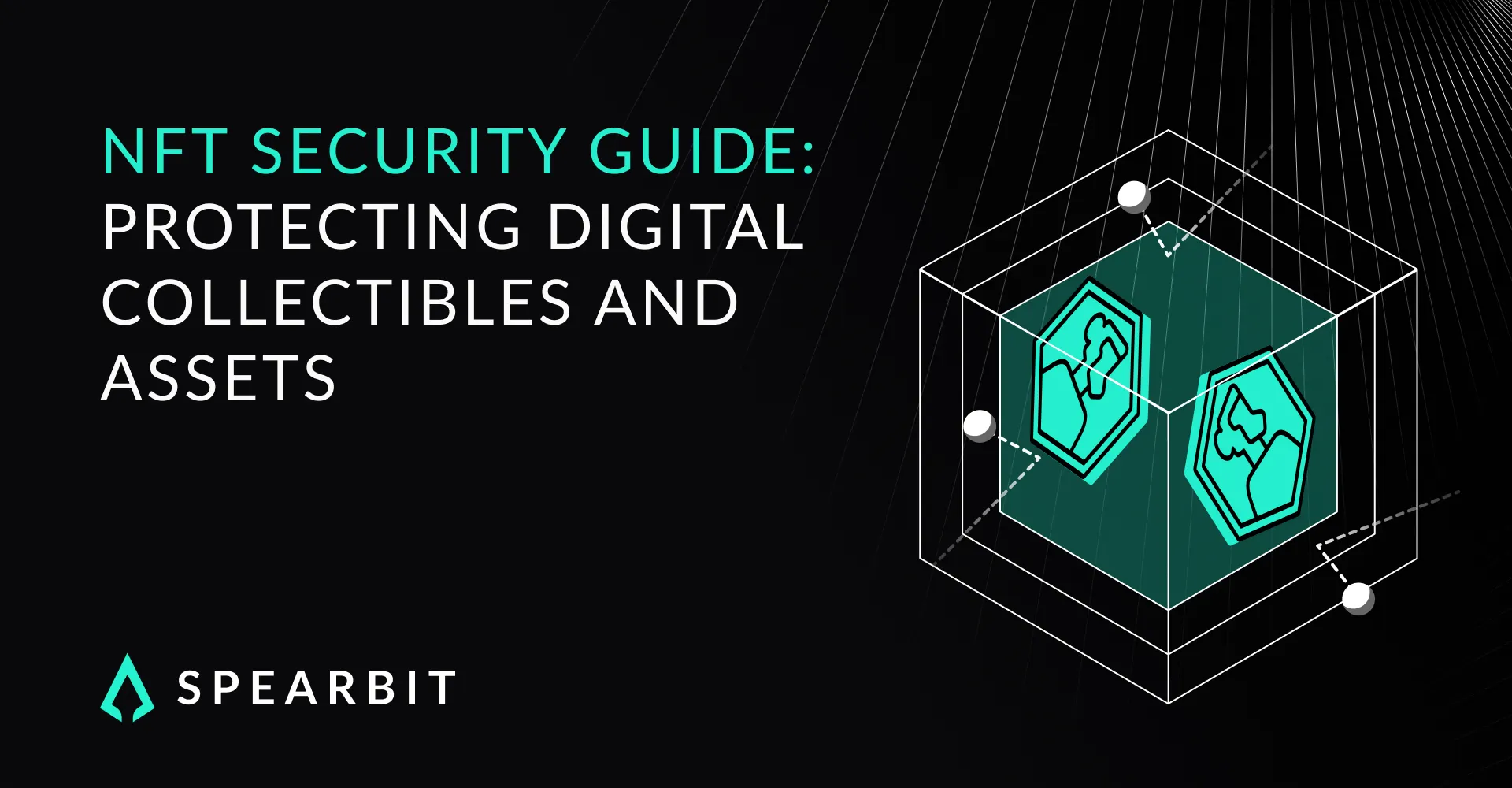NFTs now power memberships, access rights, gaming, and financial utilities. As utility expands, risk concentrates in contract logic, metadata governance, and operational controls. This guide is written for engineers shipping ERC-721 or ERC-1155, marketplace or mint infrastructure developers, and program managers responsible for drops.
Threat Landscape
Malicious signing and phishing
Attackers route users to fake mints or compromised sites and hide transfers in signatures. They exploit blind signing, confusing calldata, and permission reuse.
Smart contract vulnerabilities
Weak mint controls, unsafe upgrade paths, and over-privileged roles remain the primary failure modes. Typical issues include unrestricted minting, replayable signature mints, unscoped emergency functions, unsafe hooks, and reentrancy around payouts.
Metadata tampering and fake collections
Updatable URIs without timelocks or hashes allow post-mint swaps. Counterfeit collections and cybersquatted domains continue to trick collectors outside verified marketplaces.
Off-chain dependencies
Storage backends, reveal pipelines, allowlist servers, and legal agreements introduce integrity and availability risk. Treat every external dependency as part of the threat surface.
Market and regulatory context
Collections with explicit financial promises or revenue participation create disclosure and classification exposure. Thin liquidity amplifies price manipulation and wash trading risk.
Code-Level Risk Patterns in ERC-721 and ERC-1155
Mint controls and supply
Enforce irreversible caps in code. Phase gates and allowlist proofs should be bounded by block range, chainId, nonce, and expiration to stop replay across drops.
Signature-based mints
Use strict EIP-712 domains. Include chainId, contract address, user, nonce, deadline, and intent. Reject reused or expired authorizations. Bind signatures to the specific drop configuration.
Metadata governance
If URIs are mutable, gate updates behind a timelock and a multisignature. Anchor content with a hash. Prefer on-chain pointers or IPFS and Arweave with CID anchoring. Publish a public policy for when metadata can change.
Privilege design
Scope roles for mint, reveal, freeze, withdraw, and emergency pause. Remove or timelock emergency functions after stabilization. Separate operational keys from treasury. Rotate operational wallets on a schedule.
Upgradeability
Default to non-upgradeable collections. If a proxy is required for infrastructure, separate the admin from operators, protect with a timelock and a multisignature, and pause mint hooks during upgrades. Test upgrade paths on a fork.
Payouts and withdrawals
Use pull patterns. Protect against reentrancy. Validate PaymentSplitter math and recipient updates. Require explicit acceptance for payee changes.
Operator and royalty logic
Treat EIP-2981 and operator filters as policy, not protection. Avoid custom transfer restrictions that can be bypassed via hooks or meta-transactions. Document marketplace compatibility before launch.
Randomness and reveal
If using delayed reveal, anchor randomness. Use commit-reveal schemes or verifiable randomness beacons. Ensure the random seed cannot be influenced by privileged actors or timing.
Airdrops and claims
When using Merkle or EIP-712 claims, include chainId and expiry. Enforce single use. Protect claim functions from griefing and gas bombs. Cap per-transaction loops.
Testing and verification
Combine property-based fuzzing, invariant testing, and fork testing. Add assertions around supply, price boundaries, and signature reuse. Treat test coverage as a requirement rather than a metric.
Operational Best Practices for Users
• Simulate every signature and preview transfers with a safety layer before approving. Pocket Universe launches before your wallet, shows exactly which assets will move, and flags suspicious calls. It is effective for catching hidden token or NFT transfers during mint and marketplace flows. Available as a Chrome extension.
• Use hardware wallets for long-term holds and separate mint, trading, and treasury wallets.
• Rotate approvals on a cadence tied to activity using trusted revocation tools.
• Verify contract addresses and domains. Prefer verified collections with transparent history.
• Keep a burner wallet for new sites and untrusted mints. Move assets only after validation.
Operational Best Practices for Organizations
• Document mint phases, caps, and allowlist rules. Bind signatures to chainId and deadlines and enforce single-use semantics.
• Separate deployer, admin, and treasury roles. Use timelocks and multisignatures for sensitive actions. Store keys in hardware devices with strict access policies.
• Make metadata governance explicit. If mutable, publish policies and a change log. If immutable, state that clearly in the documentation and pin content hashes.
• Monitor for wash trading, volume spikes, anomalous flows, and counterfeit collections. Establish alerts for domain spoofing and contract impersonation.
• Harden the reveal pipeline. Treat storage, CDN, and any reveal service as critical infrastructure with redundancy and access logging.
• Publish a security contact and a simple incident flow for community escalation. Run a tabletop exercise before launch.
• Align legal posture with utility. Coordinate with counsel on licensing, ownership semantics, and any revenue participation.
Deployment Checklist
• Supply caps and mint permissions enforced in code and tested under adversarial scenarios.
• Signature mints include chainId, nonce, and expiry, are single-use, and are bound to a specific drop configuration.
• Metadata is immutable or protected by a timelock, a multisignature, and a content hash commitment.
• Proxy admin, if any, is separate from operators and bound by a timelock. Upgrade test performed on a fork.
• Payout logic uses pull patterns with reentrancy protection and validated recipient updates.
• Domains, endpoints, and storage backends are verified, monitored, and have a rollback plan.
• Wallet segregation across deploy, mint operations, payouts, and treasury with documented runbooks.
• Public security contact and incident plan published before launch, with a dry run completed.
Closing Considerations
Security in NFT systems spans contract logic, metadata integrity, custody, and operations. As NFTs embed into identity and asset representation, organizations should validate code paths, privilege design, and incident playbooks before launch and after upgrades.
Spearbit has delivered audits and code reviews for leading NFT and marketplace ecosystems, including Sky Mavis, OpenSea, and Tensor. For new launches and migrations, our review approach centers on mint controls, metadata governance, privilege design, and incident readiness, with clear test artifacts and post-review hardening steps.
Contact us to scope your next security engagement tailored to your own needs.




